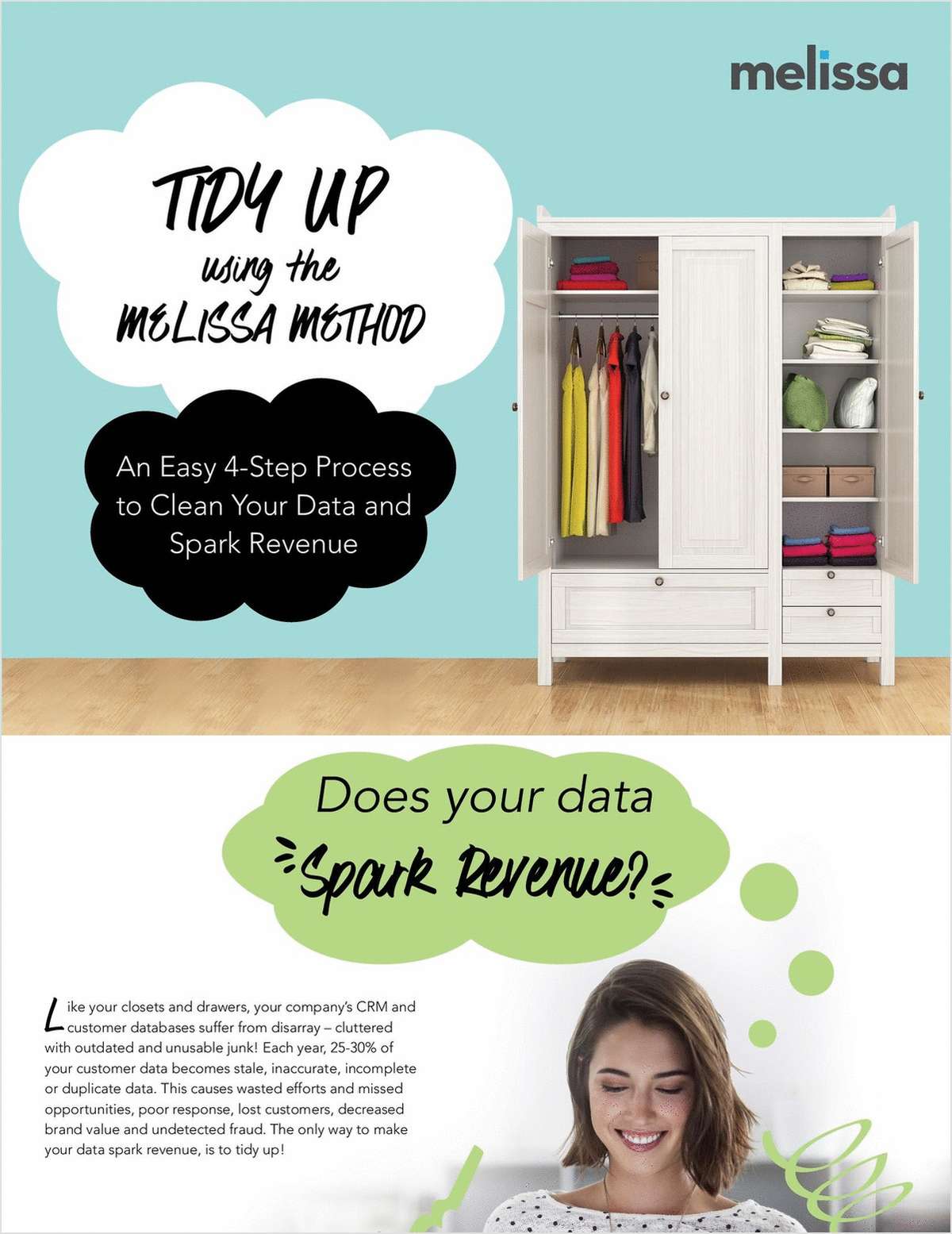Optimizing Supplier Relationships Perhaps moreso than their brethren in other industries, financial servicesinstitutions, particularly insurance companies, rely extensively onoutside suppliers for business operations.
|What makes the situation highly complex for insurance companiesis the need to manage suppliers in two key realmssuppliers ofcontract labor, known as services suppliers, and suppliers toreplenish lost or damaged goods, known as goods suppliers.
|Given the huge dollar amount that goes towards both services andgoods suppliers, competitive insurance companies need to streamlinetheir supplier relationships, “whittling down” their supplier ranksto include only the most high-caliber, readily available andaffordable resources, while wringing optimal cost-savings out ofcontracts with preferred suppliers. The actual accomplishment ofthis feat, however, is anything but simple, primarilybecause suppliers contracts tend to be departmentalized and notleveraged across insurance companies.
|With no central repository of information, insurance companiesare severely hindered in their abilities to derive contractualcost-savings and negotiate better deals with preferredsuppliers.
|Fortunately, new developments in enterprise softwarenamely,supplier relationship management (SRM) softwareare dramaticallychanging the way insurance companies manage the full course ofsupplier relationships, from sourcing and procurement to invoicingand settlement, for improved profitability and customerrelationships.
|Here, we will examine how insurance companies can leverage SRMfor improved operations in the two key realms.
|Services Suppliers.
|Like their close cousins in the banking world, insurancecompanies rely extensively on contract labor to meet customerdemands. Insurance companies have traditionally struggled to reinin services spending and the costs associated with managing myriadsuppliers–estimated to account for over 50 percent of totalcorporate spending. With so much money going towards services, howcan insurance companies gain control over these spiralingexpenditures?
|The short answerby taking services supplier relationshipmanagement processes online, thus centralizing the process andautomating the more mundane tasks associated with it. In thisspirit, lets start with sourcing and procurement.
|Bringing the SRM process online helps insurance companies toovercome departmentalization as an obstacle to efficient,cost-effective management of services suppliers. Too often, buyersin different departments across insurance companies waste timeresearching, analyzing and creating new relationships withsuppliers that another department in the company has worked withbefore.
|With an SRM system, an insurance company gains visibility overthe redundant relationships the company may have with suppliers.Instead of five different departments creating five differentcontracts with the same supplier at different rates, an insurancecompany can leverage its buying power to negotiate preferred ratesand cost structures across the enterprise, saving money for thecompany and its customers.
|In addition, by taking the sourcing process online, insurancecompanies can solicit supplier bids through an SRM system. Thismeans the company receives bids in real time like an auction,including up-to-the-minute pricing and the expected time to receivethe services in question.
|Going one step further, new supplier rating systems enablebuyers to analyze who are the companys best and worst suppliers,providing critical information for consolidating or diversifyingsuppliers and negotiating better deals with them.
|Todays SRM systems can provide buyers with not onlyunprecedented visibility into the most readily available andaffordable suppliers, but also a comprehensive history, down toindividual details on individual worker backgrounds andcompensation. In this vein, SRM systems help insurance companiesensure the integrity of their contingent workforces, whilemaintaining consistent compensation levels for similar skillsetsnot only between individual contract workers, but betweencontract workers and in-house resources.
|Consistent compensation rates are very important, becauseinsurance companies often don't concern themselves about the ratesor have no way to control them. This lack of control is the primaryculprit for out-of-control services spending.
|Heres a common scenario. An insurance company may have twocontractors with the same qualifications and experience from thesame supplier on the same client team. One may be billing out at$50 per hour, the other at $100 per hour.
|This happens because different hiring managers hire thesecontractors.
|Todays SRM systems automatically set limits and control rates,creating parity in compensation levels for similar skills andreducing maverick spending.
|Goods Suppliers.
|SRM systems are also quickly gaining traction in the claimsmanagement area, helping insurance companies to manage and optimizerelationships with preferred suppliers for lost or damagedgoods.
|Once preferred goods suppliers are sourced and utilized as thede facto standard in a centralized system, insurance companies cantap significant cost savings resulting from discounts. For example,a company may save an average of a days or a day-and-a-halfs worthof rental car fees every time a customer uses a preferred auto bodyshop for automobile damage.
|In addition to contractual cost savings, whittling down goodssuppliers can have a significant impact on what is ultimately a keydeterminant of bottom line resultscustomer satisfaction.
|Remember, an online system centralizes SRM and removescommunication barriers. When insurance companies and preferredsuppliers are in constant contact, lost and/or damaged goods arereplenished more quickly and easily, resulting in decreasedinconvenience and friction, and hence, higher satisfaction, on thecustomer end.
|Imagine how an insurance company could improve its customerservice during a customers most vulnerable timethe claims process.For example, a fire burns a customers house down and the ownersneed to replace their household goods. Because the insurancecompany has negotiated contracts with preferred suppliers forpreferred prices, the customer could go directly online and quicklychoose and receive replacement goods from a catalog. The ease andspeed of the process builds customer loyalty and lowers the cost ofthe claim for the insurance company.
|By virtue of inherent supplier rating capabilities, todays SRMsystems help insurance companies determine the most affordablesuppliers, further helping to drive down insurance companies claimscosts. Such systems also deliver a valuable negotiating platform.For instance, if a car rental company promises a response within ahalf hour and doesnt deliver, the insurance company can manage andre-negotiate the contract, ultimately promoting more value for theinsurance companys dollar while promoting a higher level ofcustomer service.
|Finally, embedded analytics show insurance companies how theirvendors are performing. With this concrete information, insurancecompanies enjoy better lines of communication with preferredsuppliers, who in turn benefit from tangible information in termsof performance and how theyre being measured.
|The ultimate benefits of SRM systemsnamely, significantcost-savings and improved efficiency and customer servicearerealistic and achievable, although not without theirchallenges.
|There are three main steps to SRM in insurance: identificationof suppliers with which to establish preferred relationships;negotiation of relationships; and collaboration with thesesuppliers when customer demand spikes (in the services supplierrealm) and/or when claims are submitted (in the goods supplierrealm).
|Todays SRM systems do not yet handle negotiation ofrelationships. However, by automating the mundane tasks of managingsupplier relationshipsnamely sourcing, which often involves a hugeamount of time for procurement departments, and invoicing andsettlement, which often yield huge paper trailsemployees can focuson more strategic activities, including contract negotiation.
|Insurance companies looking to implement any new system shouldbe prepared for some friction, not only from within, but from itssuppliers. New SRM systems have been known to intimidate suppliersa bit. With insurance companies now mandating that information besent to the system “this way or that way,” suppliers can easilybecome overwhelmed.
|The good news is that todays SRM systems can accommodate diversetypes of electronic information exchange. In addition, aWeb-enabled solution is easily accessible, no matter the level oftechnological sophistication on the supplier side.
|To overcome resistance, insurance companies must be prepared toreally build the business case both internally and among suppliers.They will need to clearly explain the benefitsfor insurancecompanies, happier customers and lower claims fulfillment costs;for suppliers, more business and faster payment.
|In the realm of goods suppliers, SRM solutions may still involvea fair degree of “re-keying” of information from front-end claimsadministration systems to SRM systems. Many believe that ifinsurance companies rely on claims adjusters to re-keyinformationmaking SRM just another manual, “need-to-do” processthepotential value of SRM solutions will be lost.
|For this reason, many insurance companies are looking todirectly integrate claims management and SRM systems. In themeantime, they are eliminating the need to “re-key” by portinginformation electronically at various intervals in batch mode.
|Gaining real-time visibility and control over services supplierrelationships and spending is becoming an increasingly criticalfocus area for insurance companies, especially in these challengingeconomic times.
|Overall, SRM enables an insurance company to gain a completepicture of its supplier relationships. SRM delivers criticalinformation on goods and services spending to all of the key peopleinvolved in the decision-making process. Most importantly, itallows insurance companies to start managing their supplierspending strategically and proactively. This helps optimizeefficiency and provide additional services to customers, whilereducing seemingly uncontrollable expenditures.
|Frank Siderio is an insurance industry strategist, and ChrisYaldezian is a financial services industry strategist forPeopleSoft, based in Pleasanton, Calif.
Reproduced from National Underwriter Edition, April 21, 2003.Copyright 2003 by The National Underwriter Company in the serialpublication. All rights reserved. Copyright in this article as anindependent work may be held by the author.
Want to continue reading?
Become a Free PropertyCasualty360 Digital Reader
Your access to unlimited PropertyCasualty360 content isn’t changing.
Once you are an ALM digital member, you’ll receive:
- All PropertyCasualty360.com news coverage, best practices, and in-depth analysis.
- Educational webcasts, resources from industry leaders, and informative newsletters.
- Other award-winning websites including BenefitsPRO.com and ThinkAdvisor.com.
Already have an account? Sign In
© 2024 ALM Global, LLC, All Rights Reserved. Request academic re-use from www.copyright.com. All other uses, submit a request to [email protected]. For more information visit Asset & Logo Licensing.








